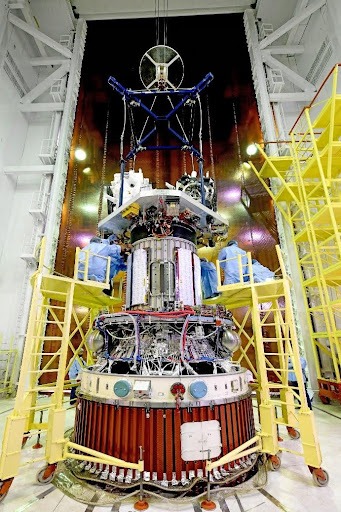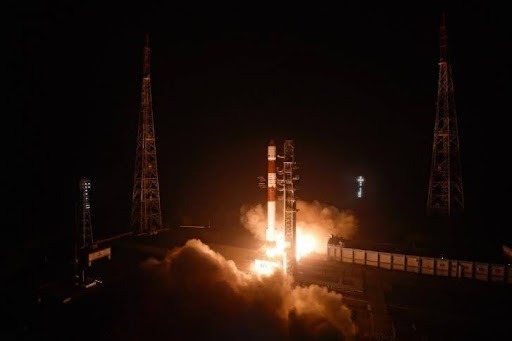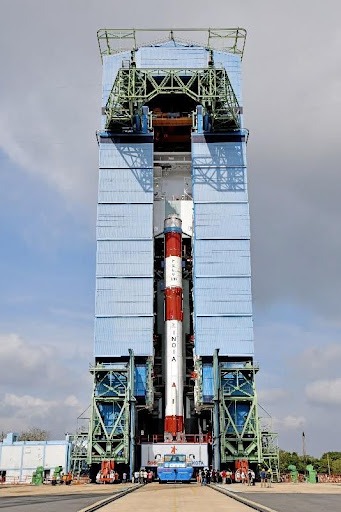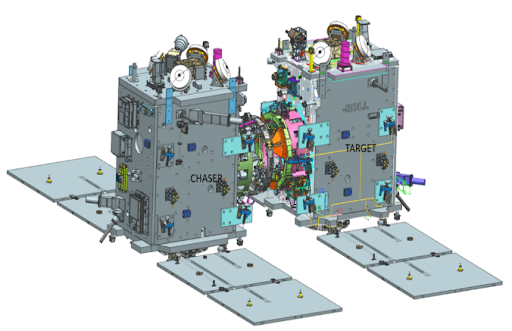A prominent milestone for India’s Space program is being achieved with the SpaceX mission, the Space Docking Experiment. ISRO led this endeavour to demonstrate the capability to set up a docking system in space, which is an integral part of current and proposed future missions such as lunar missions, sample return missions, and Bharatiya Antariksh Station. Successfully accomplishing this will place India in a select few that have mastered this capability.
At Space India, Through the Space Astronomy Club session “Rocketry”, Students understand the science and principles of rocketry, parts and functions of rockets distinctly. They create their own hydro rockets and understand the design elements necessary for a steady flight. Then they test the rockets, and launch them using the special launcher. Our Club sessions are designed to inculcate the spirit of inquiry and logical thinking, to ask questions and seek solutions through the problem-solving approach, and to do and learn science derived from nature. Hands-on activities inculcate a scientific temper and love for science, and the participating student is trained to become an amateur astronomer and a budding space scientist.

Objectives of SpaDeX Mission
The main objective of the SpaDeX mission is
- To develop and demonstrate the key technologies required for the rendezvous, docking, and undocking of two small spacecraft, called “Chaser” (SDX01) and “Target” (SDX02). These operations are critical for missions that need multi-stage launches and collaborative payload operations. The mission also has a number of secondary objectives:
- Electric Power Transfer: Demonstrating energy transfer between docked spacecraft for future applications in robotics and inter-spacecraft energy sharing.
- Composite Spacecraft Control: Achieving precise control of docked satellites for seamless operation.
- Payload Operations Post-Undocking: Enabling independent mission objectives for each satellite after separation.

Mission Concept
The SpaDeX mission is planned to launch two small satellites weighing about 220 kg each aboard the PSLV-C60 rocket. It is scheduled to be launched in a circular orbit at an altitude of 470 km with an inclination of 55°. The Chaser and Target spacecraft will maintain a separation distance of 10-20 km after separating from the rocket body. This distance will be slowly reduced to 3 meters just before the docking.
Once docked, it shall demarche the electrical power transfer capability and get both the satellites operational and ready for the individual payload’s operation. The mission is believed to be operational for about two years.

Novel Technologies
The SpaDeX will feature a series of indigenous technology developments:
- Docking Mechanism: A miniature peripheral docking mechanism developed along the lines of the International Docking System Standard (IDSS), but modified for small spacecraft.
- Sensor Suite: This is equipped with tools such as Laser Range Finder (LRF), Proximity and Docking Sensors (PDS), and video monitoring systems for accurate positioning and velocity measurements.
- Inter-Satellite Communication Link (ISL): This allows for autonomous communication and state awareness between the two satellites.
- GNSS-Based Relative Orbit Determination: This technology allows for precise determination of relative positions and velocities using differential GNSS data.
- Rendezvous and Docking Algorithms: It uses advanced software solutions that embrace n-Pulse, Glideslope, and PV guidance strategies to ensure perfect docking maneuvers.
- Simulation Test Beds: Comprehensive testing of the entire hardware and software has been executed to validate the mission design
Docking Challenges
The small size of the spacecraft requires high accuracy for docking phases. The impact-sensitive docking system achieves a minimal velocity of 10 mm/s in approach and has an androgynous configuration that allows for either spacecraft to act as a Chaser for dockings. It has been simulated for many runs and proved that all parameters are in place for the mission.

Both spacecraft will execute different payload activities after undocking.
SDX01 (Chaser): Carrying HRC to conduct surveillance and Earth observation.
SDX02 (Target): Onboard Miniature Multi-Spectral Payload (MMX) to conduct studies on vegetation along with Radiation Monitor (RadMon) to obtain space radiation data.
Development and Ground Support
The SpaDeX spacecraft were developed by the U R Rao Satellite Centre (URSC) with contributions from various ISRO centers. Integration and testing were conducted in collaboration with private partners under strict oversight. Ground control operations will be managed by ISTRAC to ensure efficient data relay and mission execution.
Significance
The SpaDeX mission marks a significant step toward the attainment of autonomous docking capabilities required for future lunar missions such as Chandrayaan-4, which may not receive GNSS support from Earth. The technologies developed through this mission will boost India’s human spaceflight, deep space exploration, and space station operation capabilities.
In a nutshell, SpaDeX stands for India’s commitment to furthering the cause of space technology that may always be cost-effective and innovative. This mission not only cements India’s footing among the leading space-exploring nations but also embarks on future trips that could dramatically change the way outer space is understood and utilized.
—
If you like the blog, enrol your school or yourself (k-12 student) in our School Programs or Online Programs, call us at +91-74020 74020 or write to us for any query: getintouch@space-india.com

